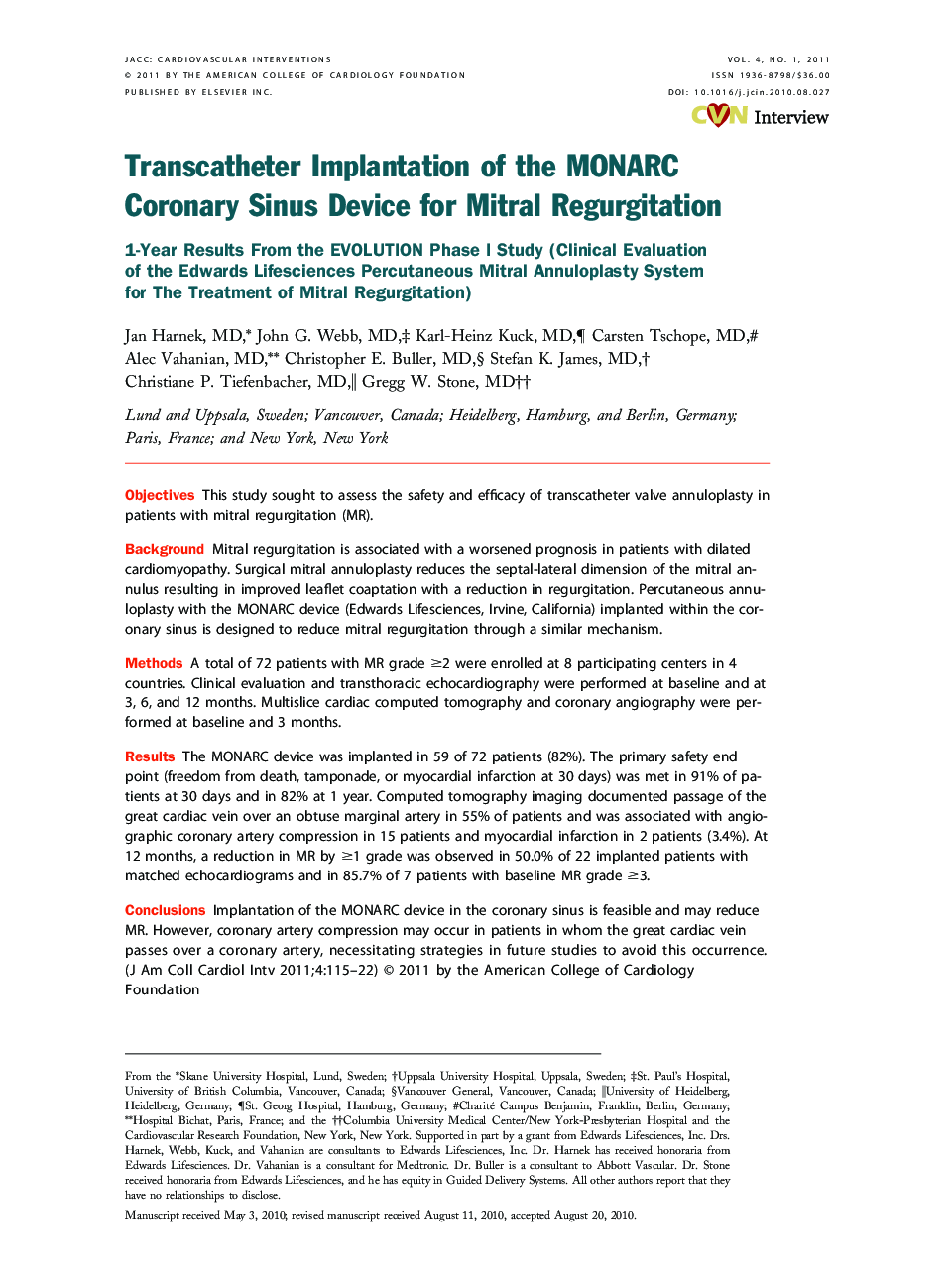| کد مقاله | کد نشریه | سال انتشار | مقاله انگلیسی | نسخه تمام متن |
|---|---|---|---|---|
| 2941066 | 1177053 | 2011 | 8 صفحه PDF | دانلود رایگان |

ObjectivesThis study sought to assess the safety and efficacy of transcatheter valve annuloplasty in patients with mitral regurgitation (MR).BackgroundMitral regurgitation is associated with a worsened prognosis in patients with dilated cardiomyopathy. Surgical mitral annuloplasty reduces the septal-lateral dimension of the mitral annulus resulting in improved leaflet coaptation with a reduction in regurgitation. Percutaneous annuloplasty with the MONARC device (Edwards Lifesciences, Irvine, California) implanted within the coronary sinus is designed to reduce mitral regurgitation through a similar mechanism.MethodsA total of 72 patients with MR grade ≥2 were enrolled at 8 participating centers in 4 countries. Clinical evaluation and transthoracic echocardiography were performed at baseline and at 3, 6, and 12 months. Multislice cardiac computed tomography and coronary angiography were performed at baseline and 3 months.ResultsThe MONARC device was implanted in 59 of 72 patients (82%). The primary safety end point (freedom from death, tamponade, or myocardial infarction at 30 days) was met in 91% of patients at 30 days and in 82% at 1 year. Computed tomography imaging documented passage of the great cardiac vein over an obtuse marginal artery in 55% of patients and was associated with angiographic coronary artery compression in 15 patients and myocardial infarction in 2 patients (3.4%). At 12 months, a reduction in MR by ≥1 grade was observed in 50.0% of 22 implanted patients with matched echocardiograms and in 85.7% of 7 patients with baseline MR grade ≥3.ConclusionsImplantation of the MONARC device in the coronary sinus is feasible and may reduce MR. However, coronary artery compression may occur in patients in whom the great cardiac vein passes over a coronary artery, necessitating strategies in future studies to avoid this occurrence.
Journal: JACC: Cardiovascular Interventions - Volume 4, Issue 1, January 2011, Pages 115–122